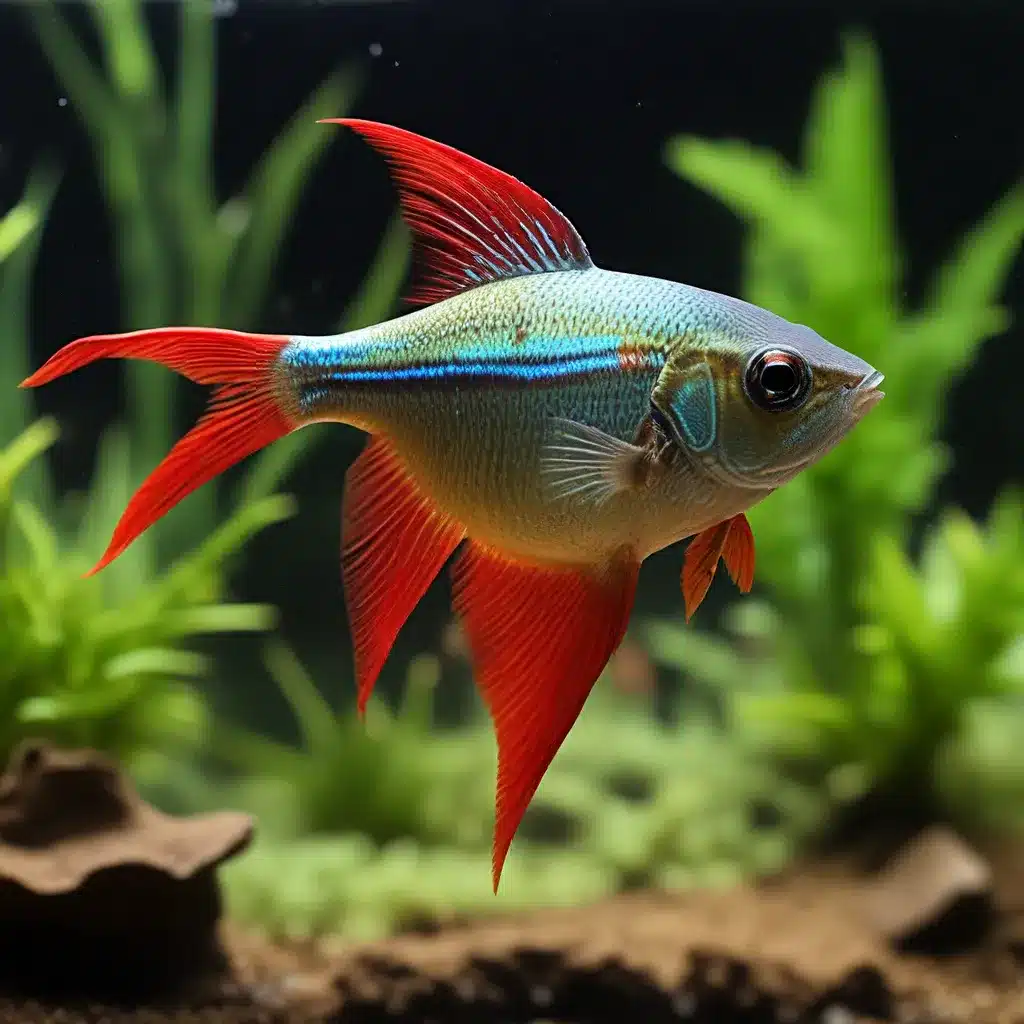
Uncovering the Allure of Tetras
Aquarium enthusiasts have long been captivated by the vibrant and diverse world of tetras. These small, schooling fish possess a unique charm that has endeared them to hobbyists worldwide. With their mesmerizing colors, peaceful temperaments, and fascinating behaviors, tetras have become a staple in the aquarium hobby. In this comprehensive guide, we will delve into the intricate details of tetra care, explore their compatibility with other species, and uncover the secrets to creating a thriving tetra-centered aquarium.
Tetra Anatomy and Appearance
Tetras belong to the family Characidae, which encompasses a vast array of species found primarily in the freshwater habitats of South America. These small, slender fish are characterized by their distinctive dorsal and adipose fins, as well as their unique forked tails. One of the most striking features of tetras is their vibrant coloration, which can range from brilliant reds and blues to iridescent greens and silvers. Many tetra species also display intricate patterns, such as the iconic neon stripe of the Neon Tetra or the bold vertical bars of the Black Skirt Tetra.
Tetra Temperament and Behavior
Tetras are renowned for their peaceful and community-oriented nature, making them an excellent choice for aquarists seeking to create harmonious tank environments. These schooling fish thrive when kept in groups of six or more, as they find security and comfort in the presence of their own kind. Observing a lively tetra school darting and dancing through the aquarium is a mesmerizing sight, often captivating both novice and experienced hobbyists alike.
Tetra Care and Water Parameters
Ensuring the proper care and water parameters for tetras is essential for their long-term health and well-being. These fish generally prefer slightly acidic, soft water with a temperature range of 72-82°F (22-28°C). Maintaining consistent water quality through regular testing and partial water changes is crucial, as tetras can be sensitive to fluctuations in water parameters. Additionally, providing adequate space and hiding spots, such as dense planting or driftwood, can help reduce stress and promote natural behaviors in your tetra community.
Feeding and Nutrition
Tetras are omnivorous, with a diet that includes both plant and animal-based foods. In the aquarium, a varied diet consisting of high-quality flakes, pellets, freeze-dried or frozen foods, and occasional live foods, such as brine shrimp or daphnia, can help meet their nutritional needs. It’s essential to avoid overfeeding, as this can lead to water quality issues and potential health problems in your tetra inhabitants.
Tetra Compatibility and Tank Mates
Choosing the right tank mates for your tetras is crucial to maintaining a harmonious and thriving aquarium. Tetras generally do well with other small, peaceful community fish, such as corydoras catfish, rasboras, and danios. However, it’s important to avoid aggressive or large predatory species that may nip at or consume your delicate tetra population. Carefully research and select compatible tank mates to ensure a balanced and stable ecosystem in your aquarium.
Breeding and Propagation
For aquarists interested in the rewarding experience of breeding tetras, understanding their spawning habits and requirements is essential. Many tetra species are livebearers, giving birth to free-swimming fry. Providing the right environmental conditions, such as soft, acidic water and hiding places for the fry, can increase the chances of a successful breeding venture. Patience and diligent monitoring are key, as tetra fry can be delicate and require specialized care during their early stages of development.
Selecting the Right Tetras for Your Aquarium
With the diverse array of tetra species available, choosing the right ones for your aquarium can be a delightful challenge. Consider factors such as adult size, color, and temperament to ensure a harmonious community. Some popular and beginner-friendly tetra varieties include Neon Tetras, Cardinal Tetras, Black Skirt Tetras, and Ember Tetras, each with their unique charm and care requirements.
Conclusion: Embracing the Tetra Fascination
Tetras, with their captivating colors, peaceful nature, and engaging behaviors, have earned a cherished place in the aquarium hobby. By understanding their care needs, selecting compatible tank mates, and providing the right environmental conditions, aquarists can create vibrant, thriving tetra communities that will mesmerize and delight for years to come. Embrace the tetra fascination and unlock the secrets to a successful tetra-centered aquarium that will bring a touch of natural wonder to your living space.

